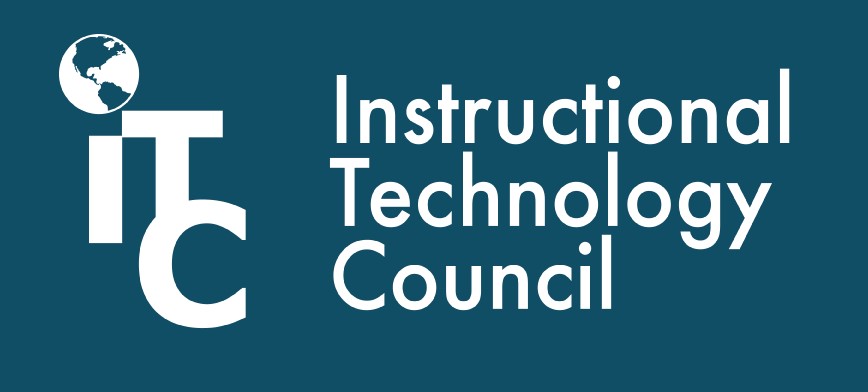Community colleges have been dominated by the coronavirus pandemic for the past two years. The pivot to virtual learning was driven by necessity, but community colleges were not strangers to online learning.

Pre-pandemic, community colleges had growing online enrollments – in fact, since the end of the Great Recession, online learning had been the primary source of enrollment growth for community colleges. Said another way, the rise of online learning and the decline of traditional instruction was well underway before the pandemic-inspired pivot. The pandemic has accelerated the move to virtual learning as community colleges attempt to return to a more traditional classroom model.
The past two years forced technology-reluctant faculty and students to function in the virtual learning environment. Certainly, this was a bit rocky at first, but since then, faculty training and improved student familiarity have combined to elevate the visibility, credibility and advantages of online courses. In addition, the pandemic significantly upended the economy and jobs. Subsequently, our students have more complicated work schedules than before and/or have been working at home – and like it.
This article is provided by the Instructional Technology Council, an affiliated council of the American Association of Community Colleges.
They now prefer taking their community college classes at home via online learning as well. For the 2022 spring term, colleges are experiencing strong online enrollments and subdued in-person enrollments. One of the great ironies is that students, when surveyed, indicated a preference for the traditional model BUT when they register, have been opting for virtual courses.
Many experts have anticipated the transformational nature of online learning in higher education. Prophets like Clayton Christensen recognized both the impact of new 21st century fiscal realities (traditional higher education models are no longer sustainable) as well as the disruptive nature of technology in instruction.
After all, how can the traditional classroom adequately prepare students for a future economy driven by artificial intelligence, automation and robotics? Community college curriculum is woefully out-of-date preparing students for the technology and careers that were rather than the for the technology and careers that will be.
The benefits of pandemic-driven disruption
In the absence of a cataclysmic event like the pandemic, most community colleges would have continued to resist substantive change away from 19th-century educational models and towards disruptive 21st-century models. The pandemic forced change and profoundly impacted administrators, staff, faculty and students. The past two years have opened our eyes to the changes that need to occur.
Sure, there will be those that try to roll back the hands of time to a world they better understood, but there will be consequences for doing so. Students are now more enlightened and empowered by the pandemic-caused disruption to teaching and learning. National surveys of students are confirming they like the flexibility and convenience of online learning. And they also know that well-prepared faculty can create engaging, informative and effective learning experiences in the virtual learning space.
This is – or at least can be – a healthy development for community colleges going forward. After all, our enrollments have been declining. State funding has been declining. Federal funding has been declining. The relevance of our curriculum and student preparation for a 21st-century economy based on rapid change and technology has been challenged. Significant change and enhanced relevancy of curriculum and student preparation are critical to the future success of our institutions and the students they serve.
What needs to change at our community colleges in support of disruption?
Our strategic planning. Really, there is very rarely any strategic planning at our institutions. We promote popular agendas, support entrenched bureaucracies, and identify tasks, but we never address strategic questions like:
- Who will our students be in the next five to 10 years?
- Is our curriculum relevant to the changing needs of the economy/workforce?
- To what extent do we need a physical campus in the 21st century?
- How do we prepare our students for a rapidly changing technology-focused economy, workforce and lifestyle?
- Is our curriculum preparing our students for tomorrow rather than yesterday?
- What are the hard/soft-skills our students AND faculty/staff need?
- Is our technology infrastructure prepared to support these new realities?
Faculty professional development in support of a 21st-century economy, workforce and lifestyle. Faculty are role models to our students in communicating the importance of technology and they need to be current in their understanding of the change that is occurring.
Student hard and soft skills. And student empowerment to learn how to learn and adapt to change.
Expanded technology infrastructure to support faculty, staff and students. We need technology-based equity by ensuring our students have adequate devices and Internet access. So too for our faculty and staff. We need a campus that supports the Internet of Things and that fosters an understanding of rapidly evolving technologies in our lives.
An institution that supports ALL of its students when they need that support. Really, 8-5 M-F is a grand business model but does not fit our traditional students’ needs. Remember, they are normally in their online classes from 7 pm to midnight M-F and weekends. Currently, support is more often delayed (wait until tomorrow/wait until Monday). Delay breeds frustration — and can convince a student – or a faculty member – to go elsewhere where the necessary support is provided. The same is true for active adult learners.
Looking ahead
Today’s leadership faces an unprecedented challenge. A choice, really. To keep doing what the institution has been doing or to learn from the lessons of the pandemic.
Leadership can learn a great deal from the pandemic. The biggest takeaway: Recognition of the need to institutionalize transformational change in the way education is delivered, curriculum and programs are updated for relevance, and how faculty/staff are better prepared to meet the needs of their students and their communities in the years to come.





